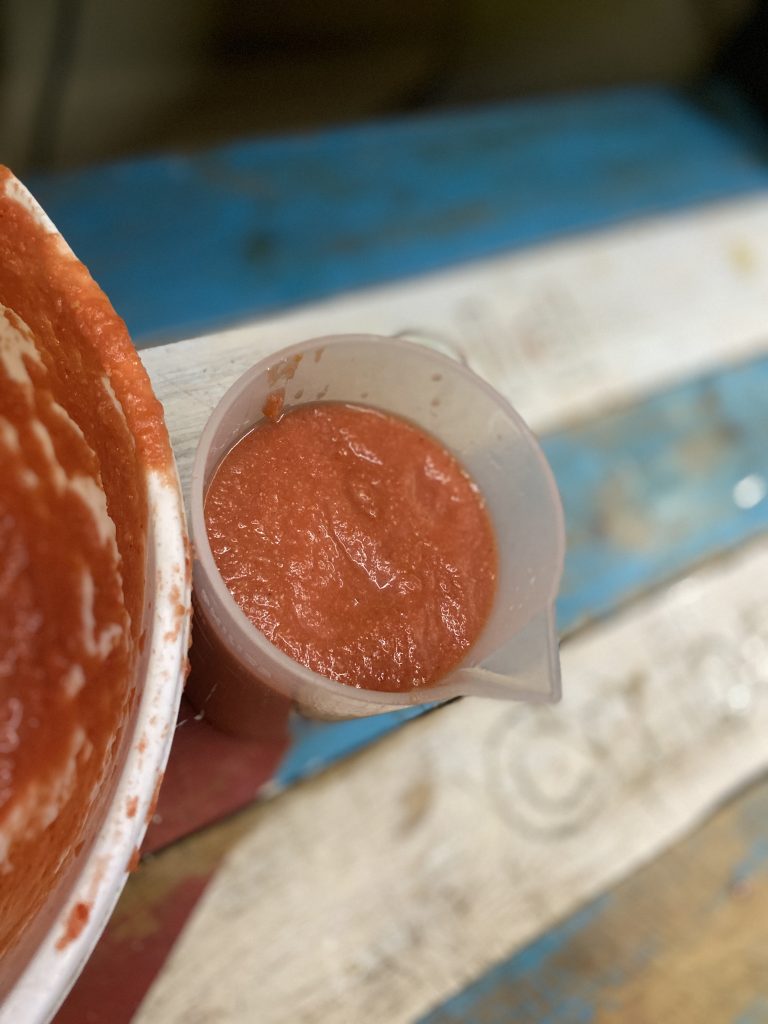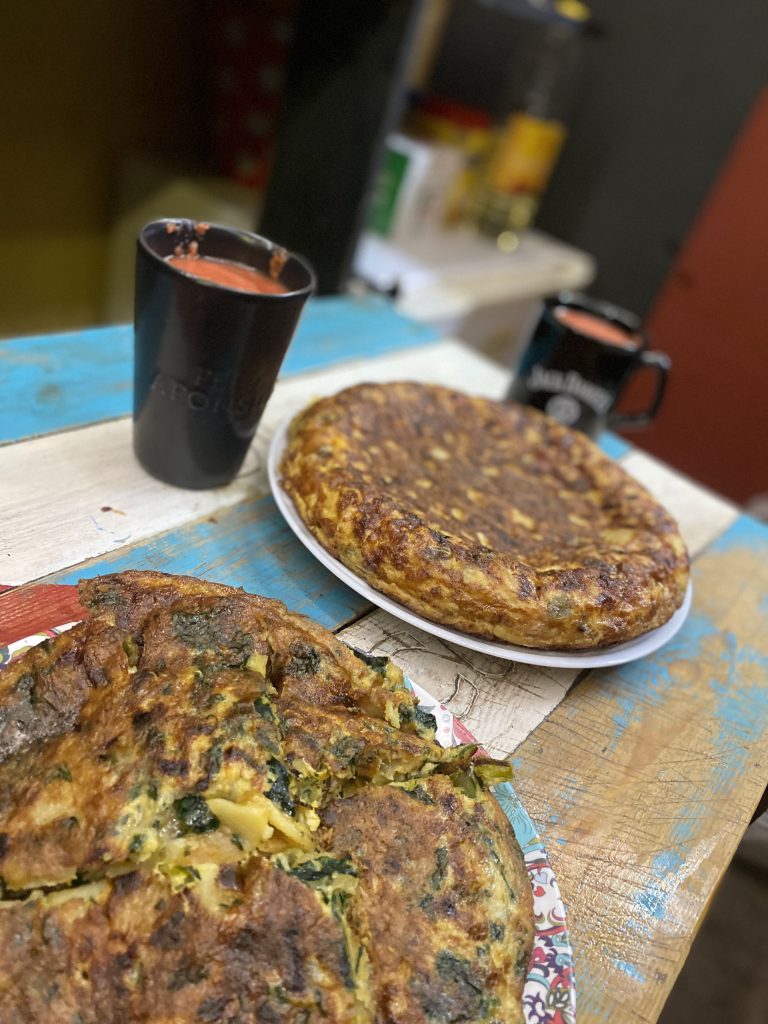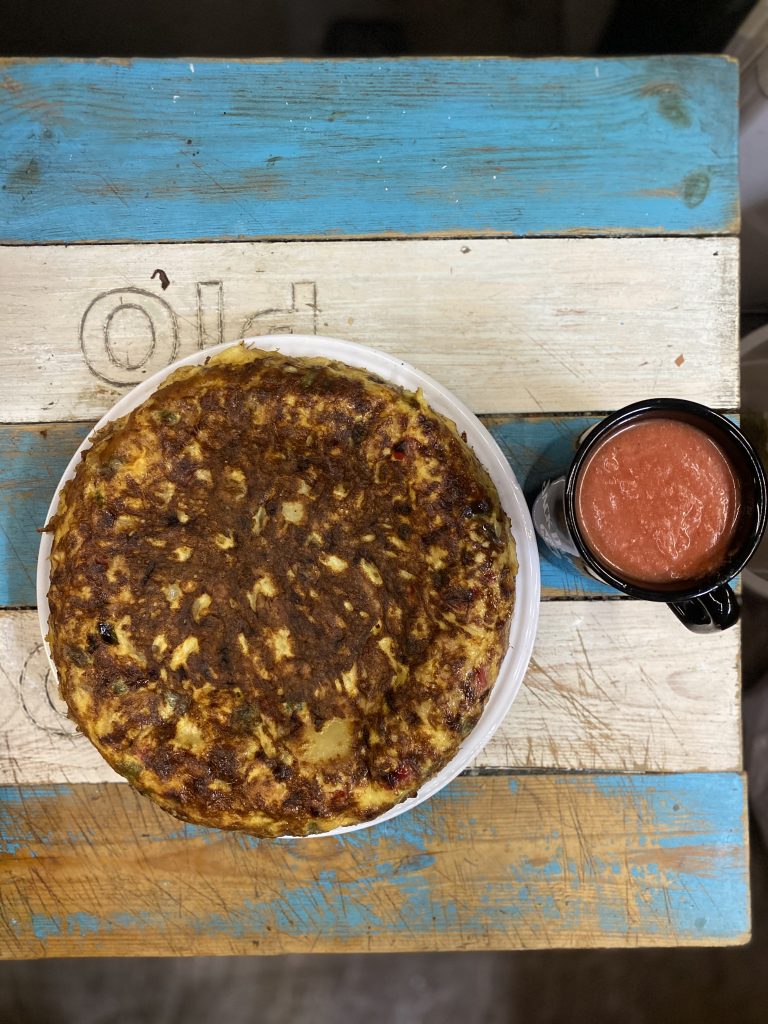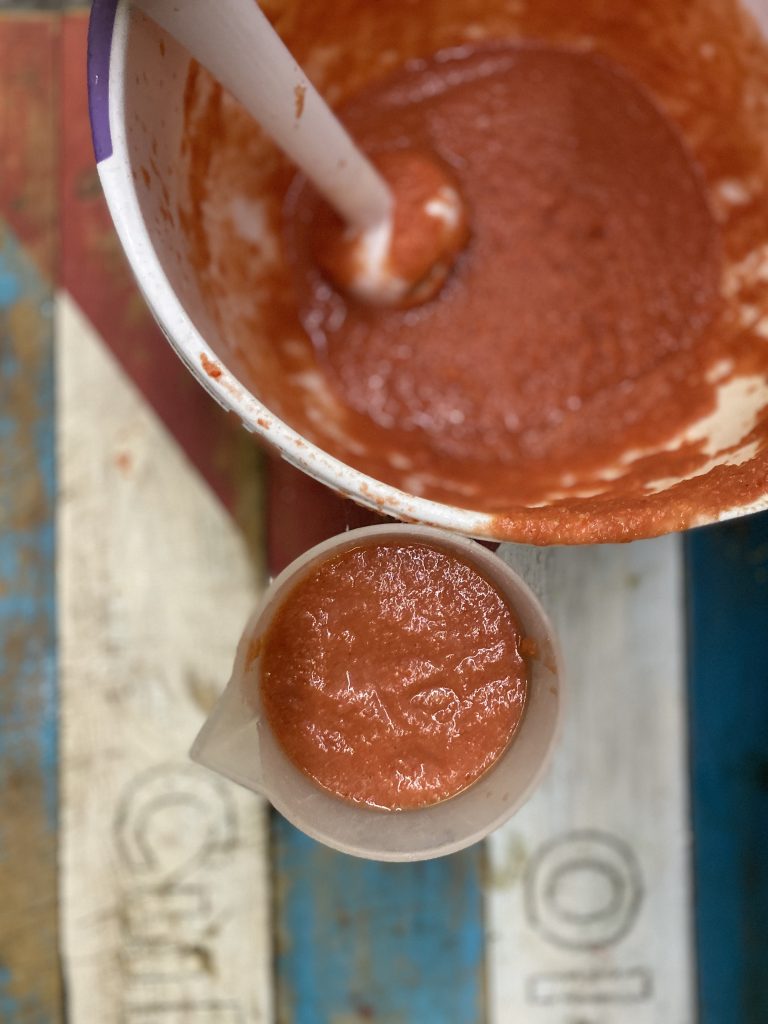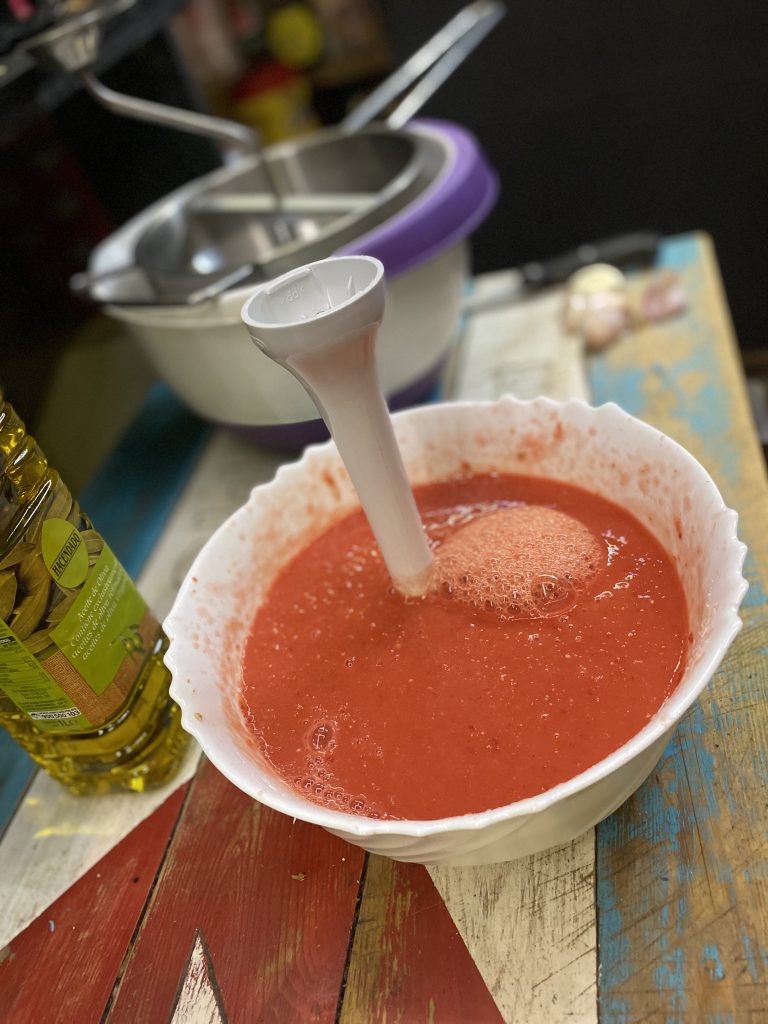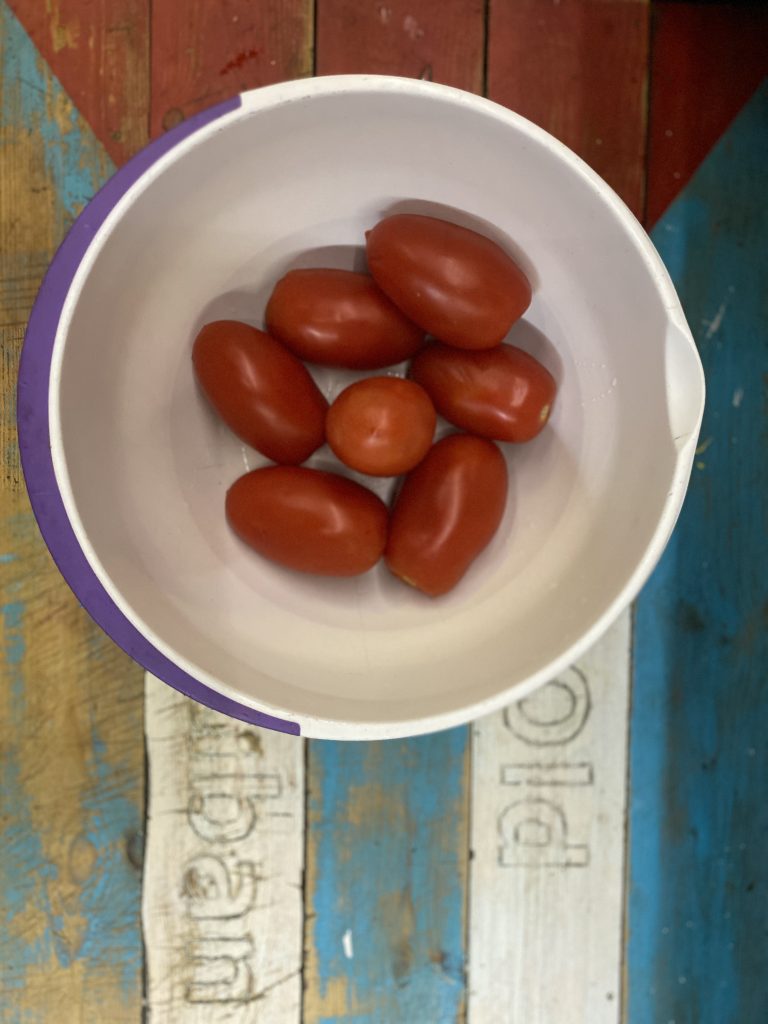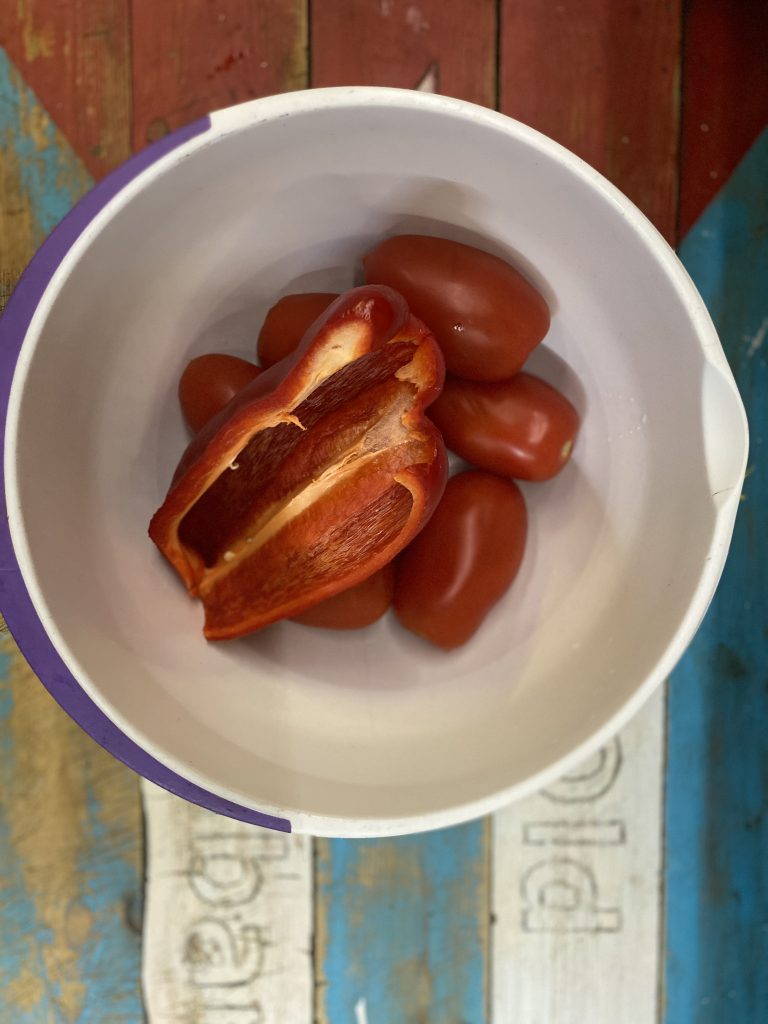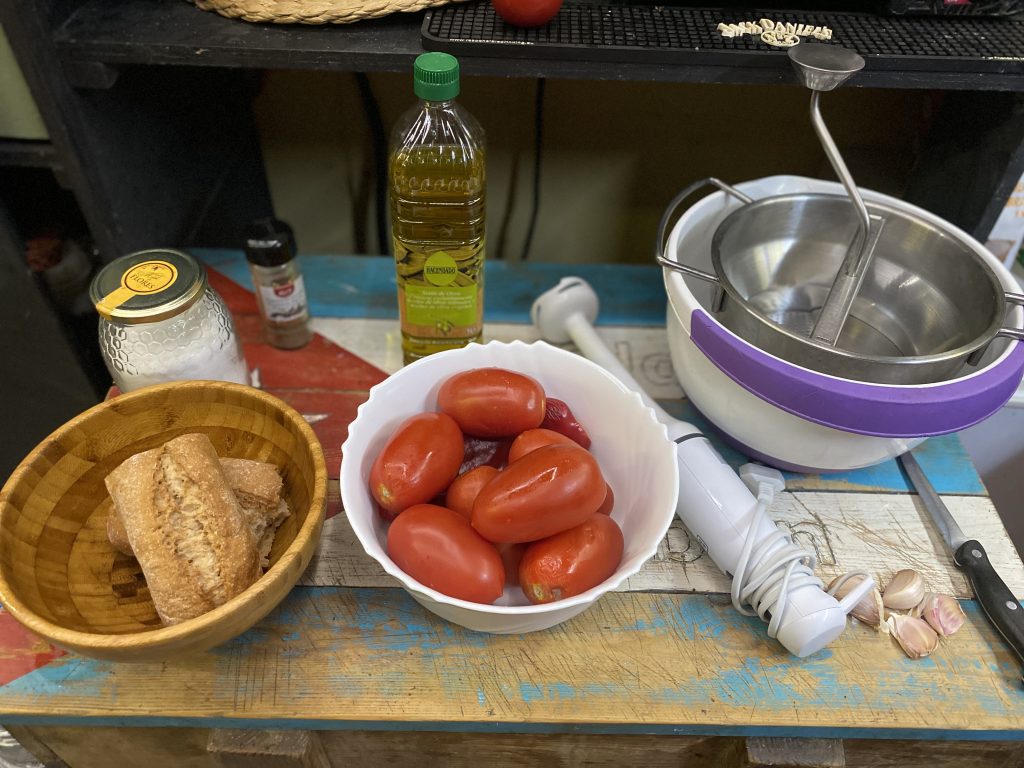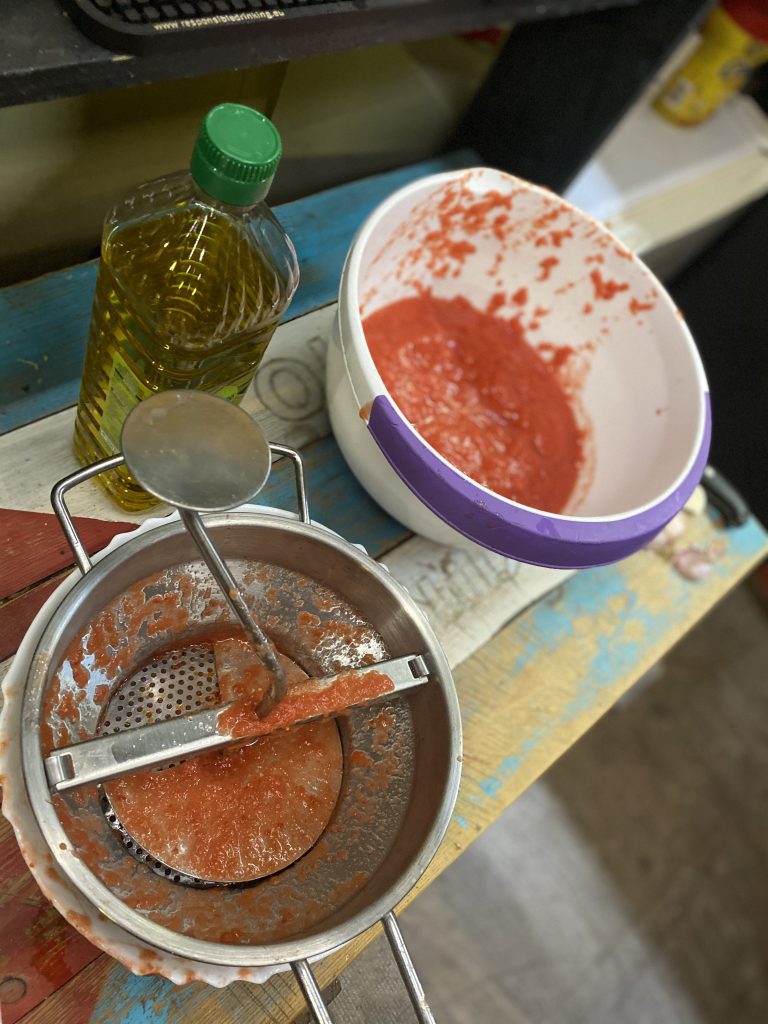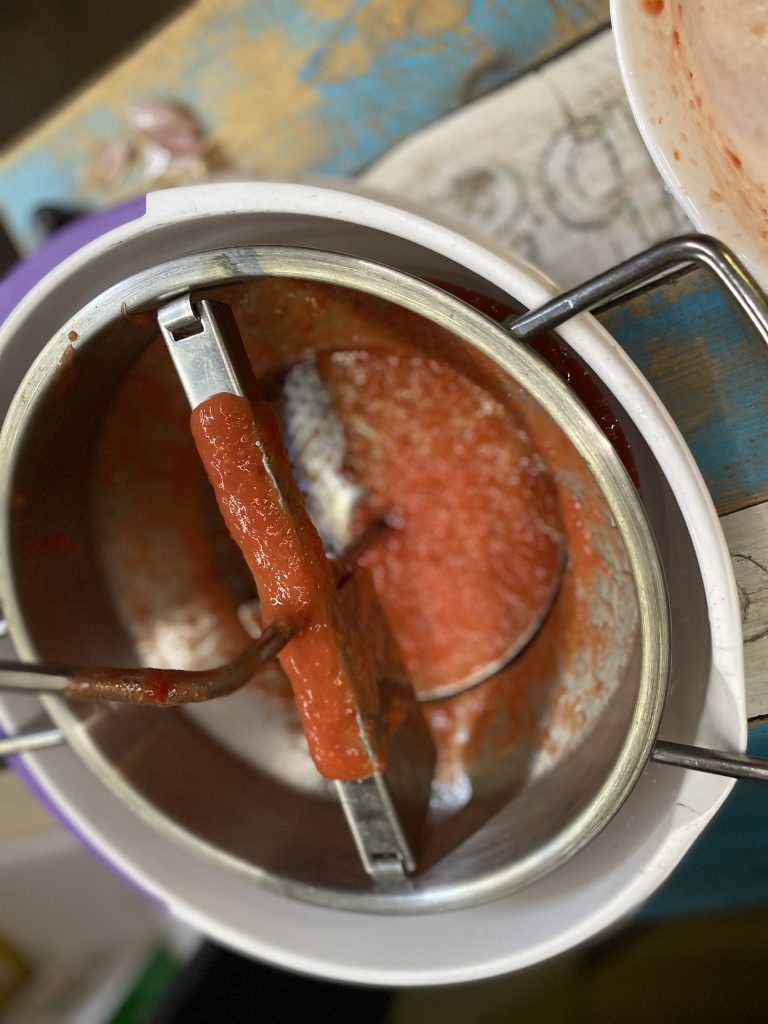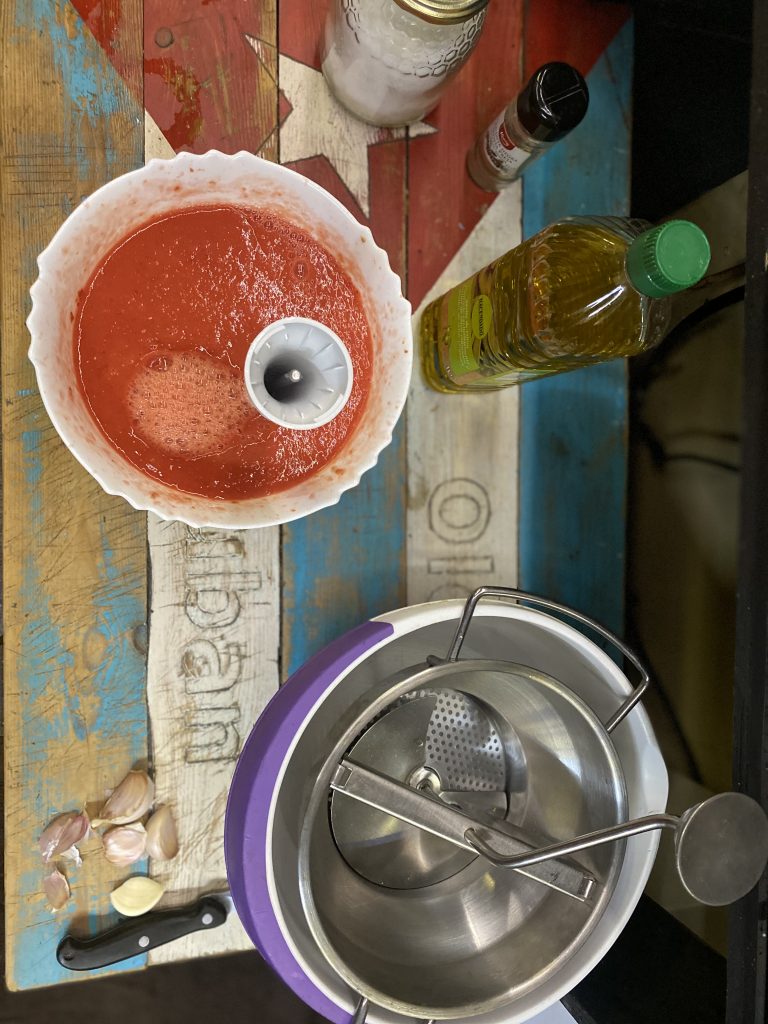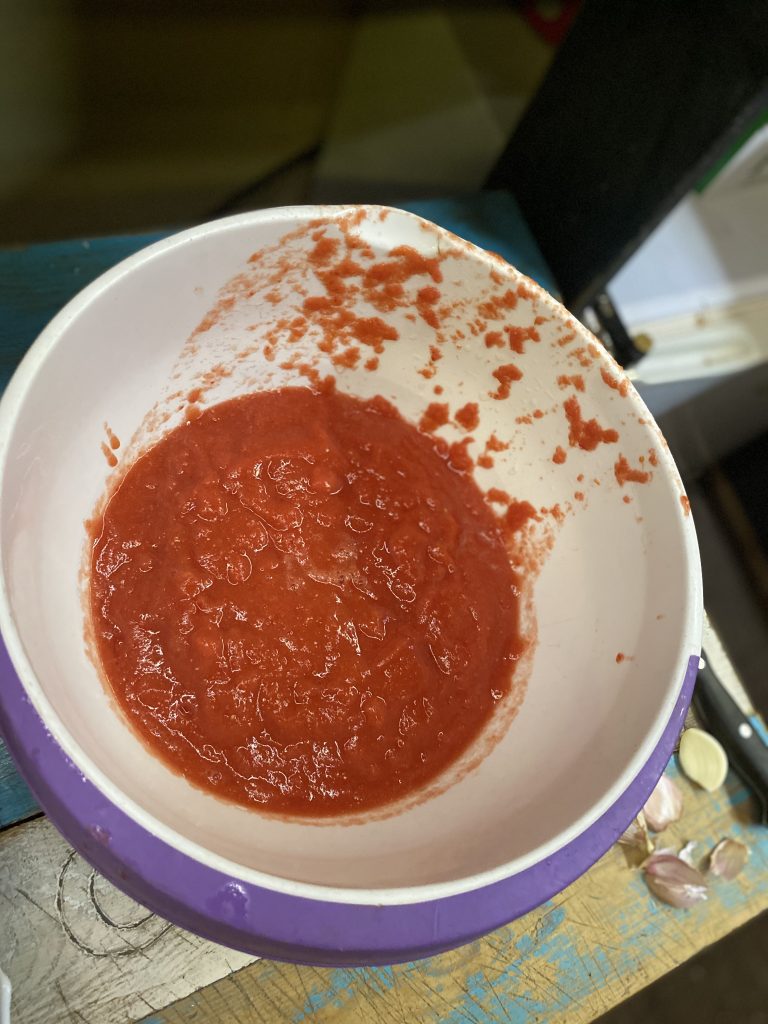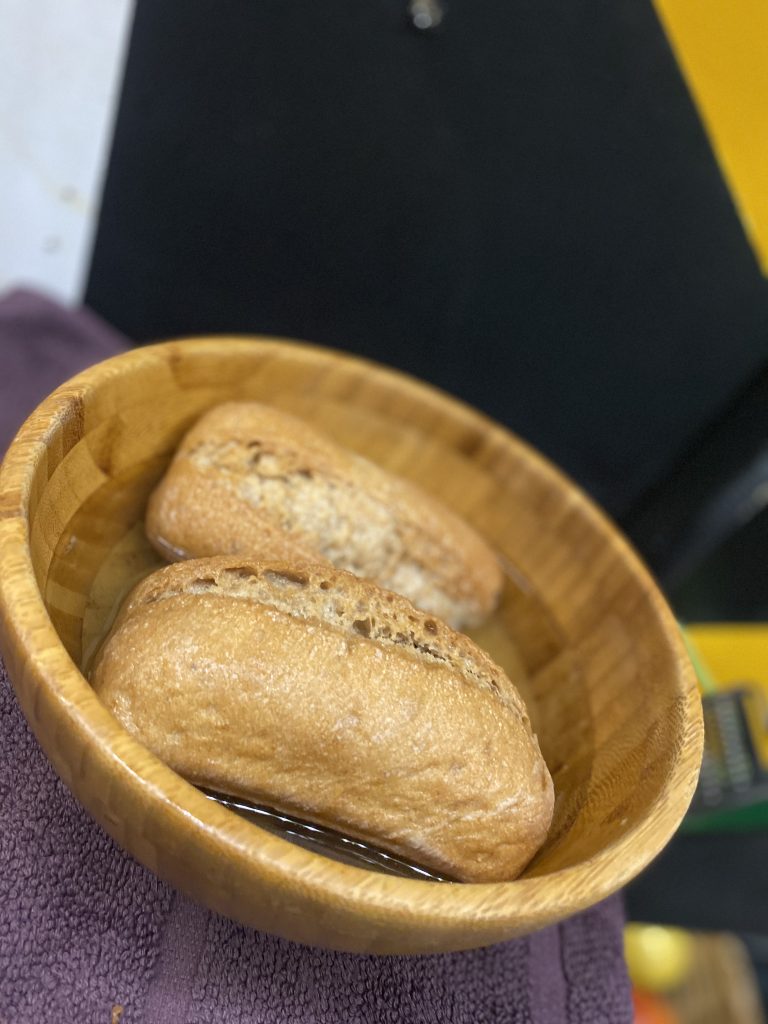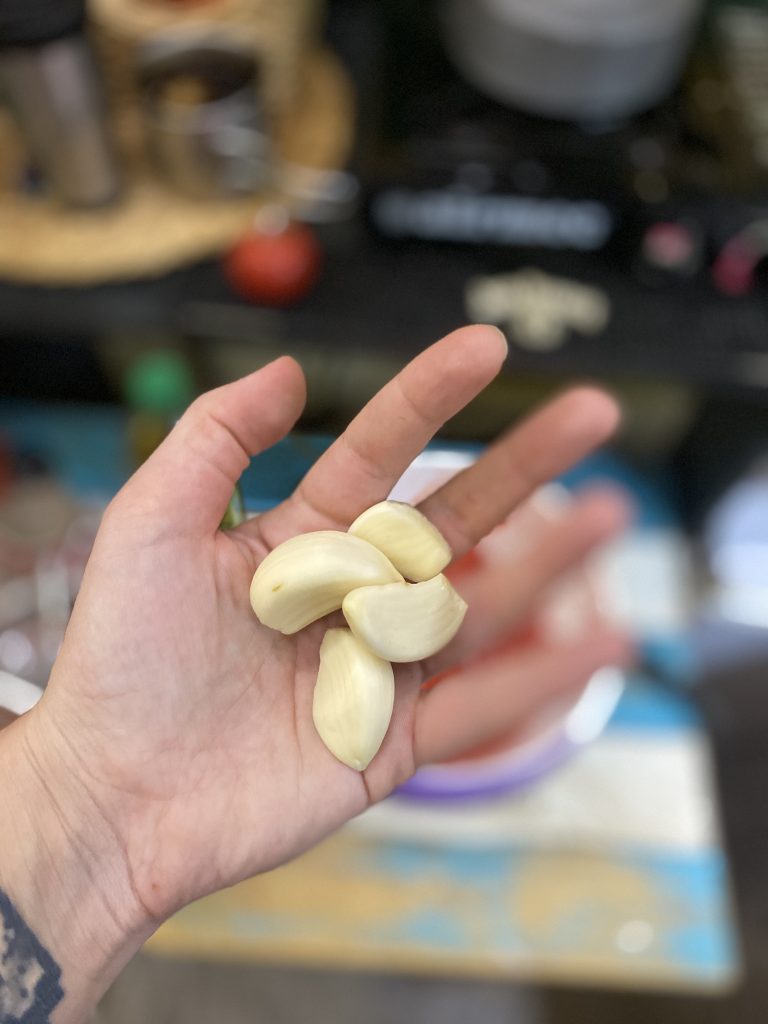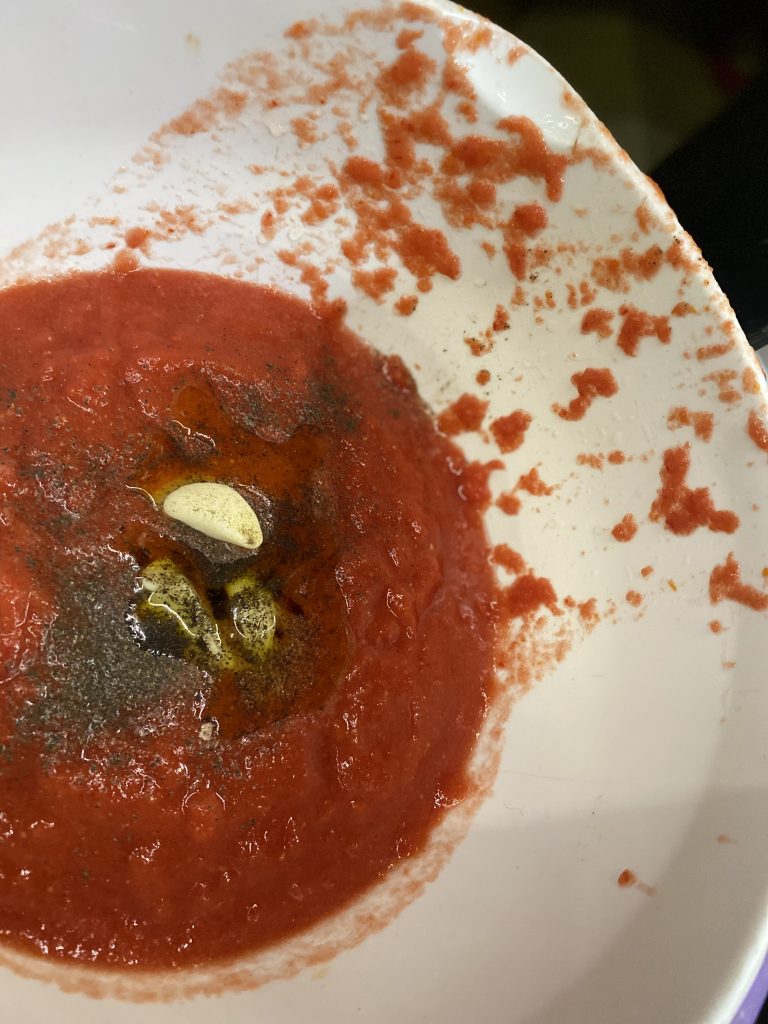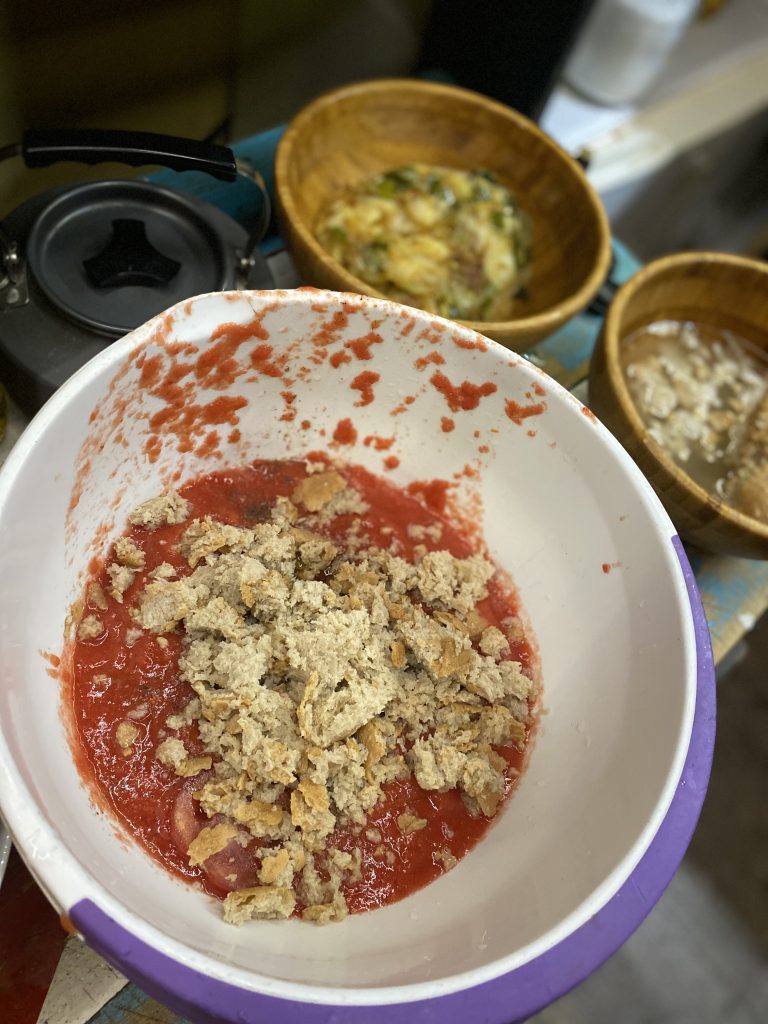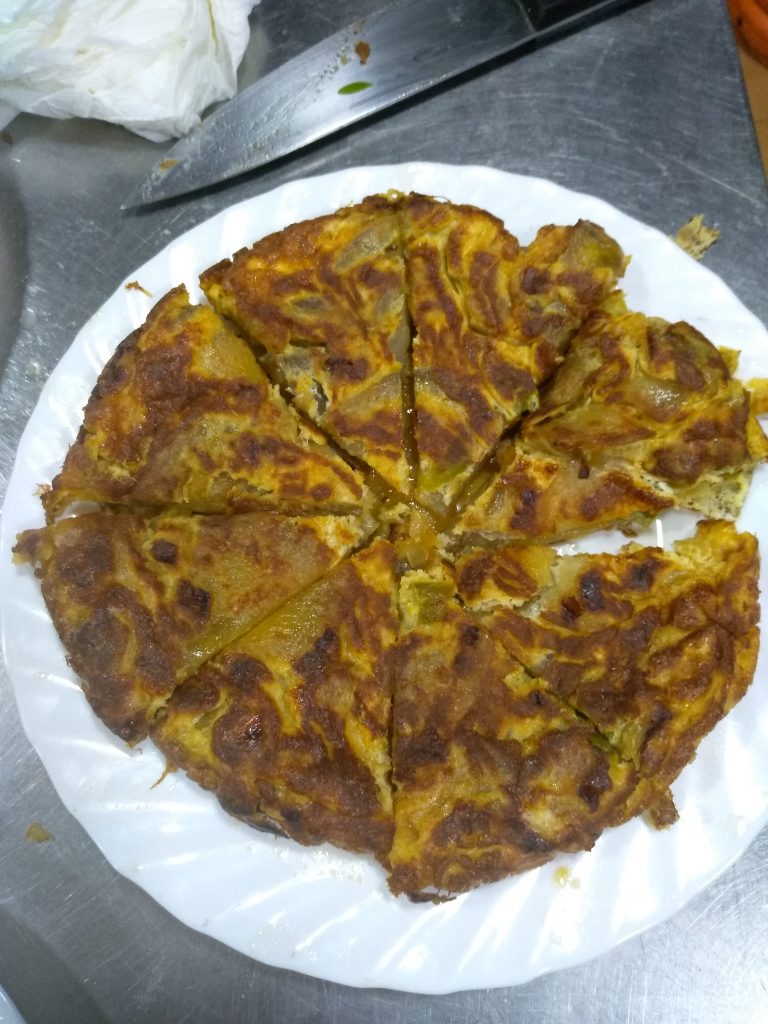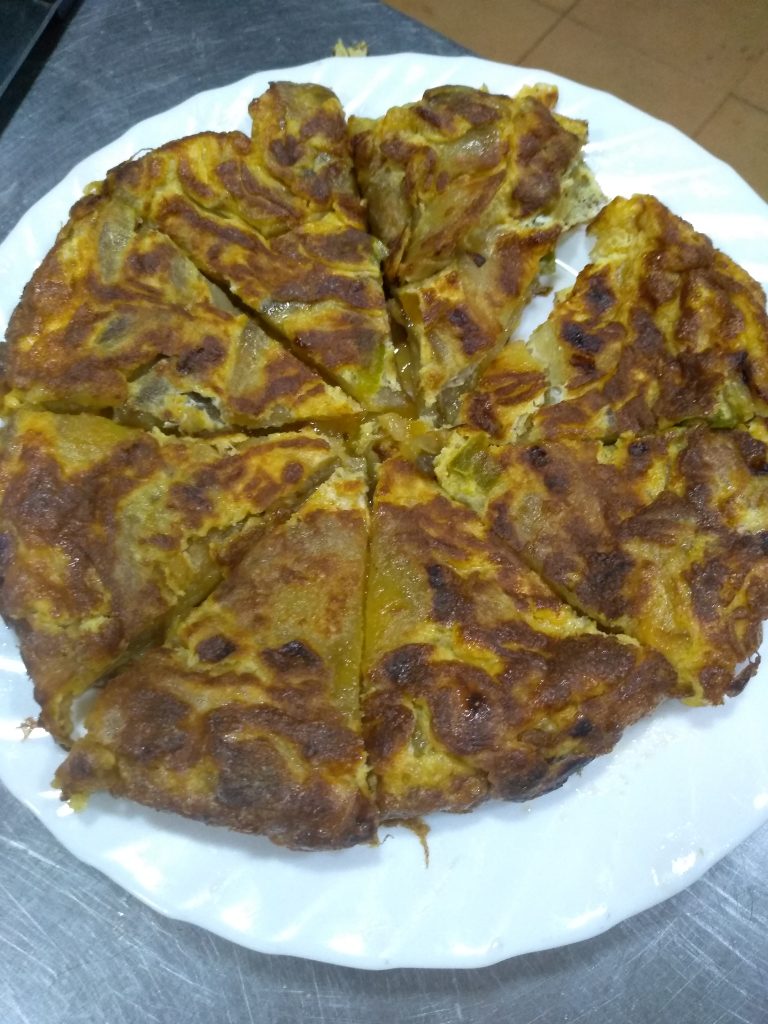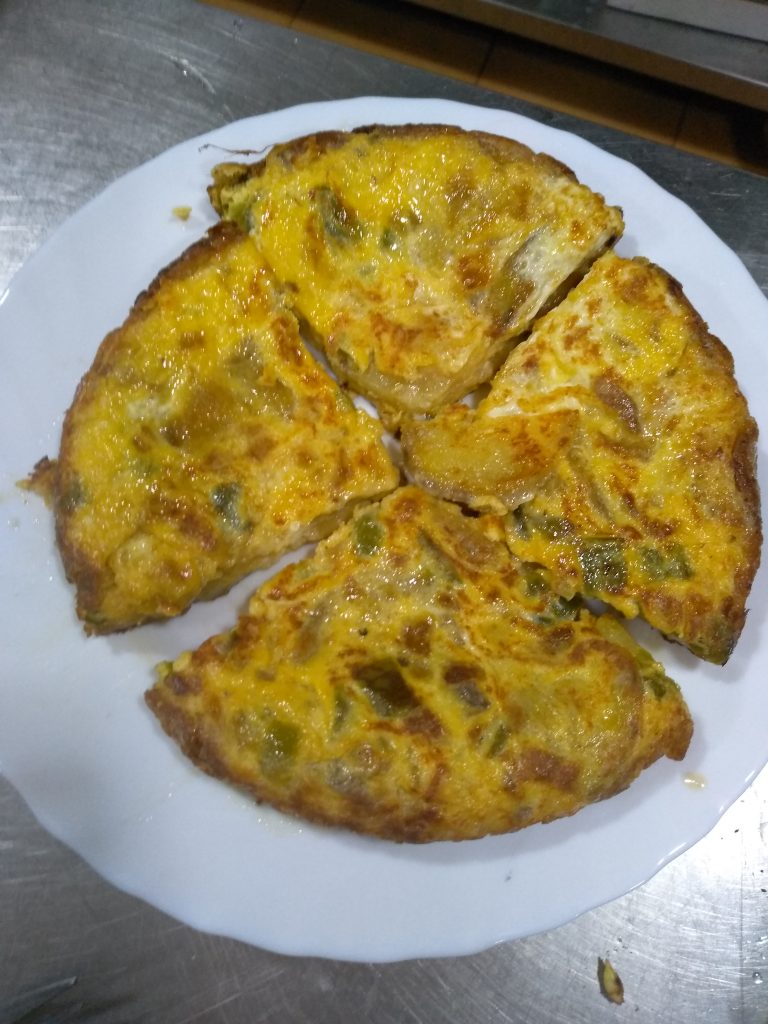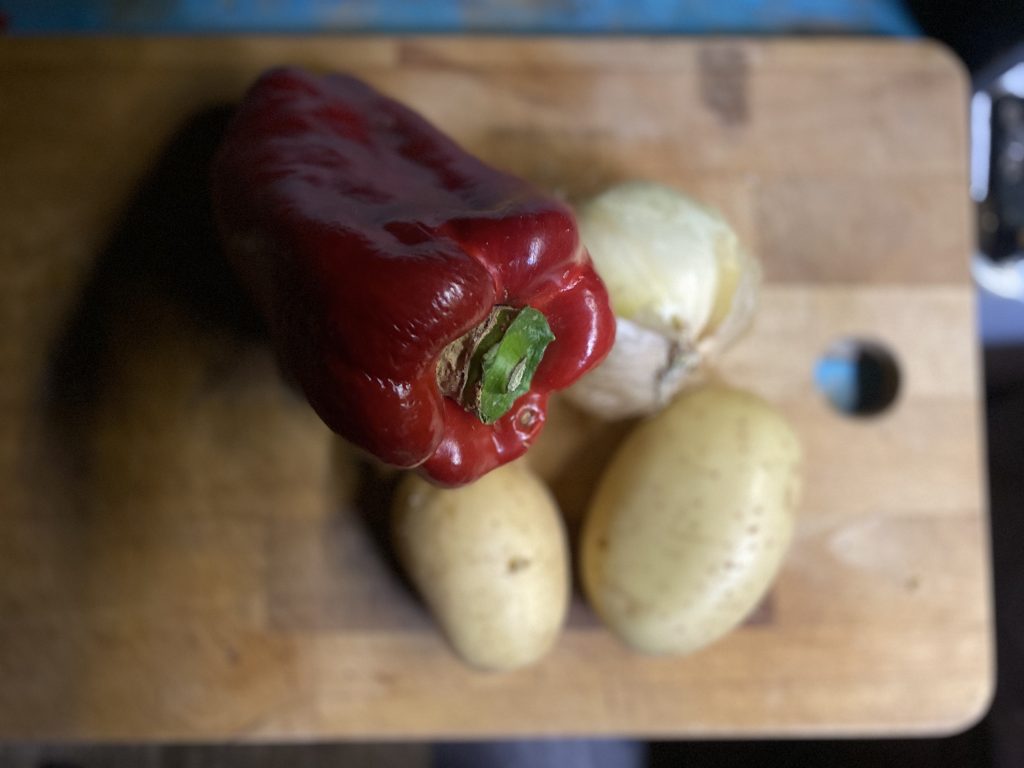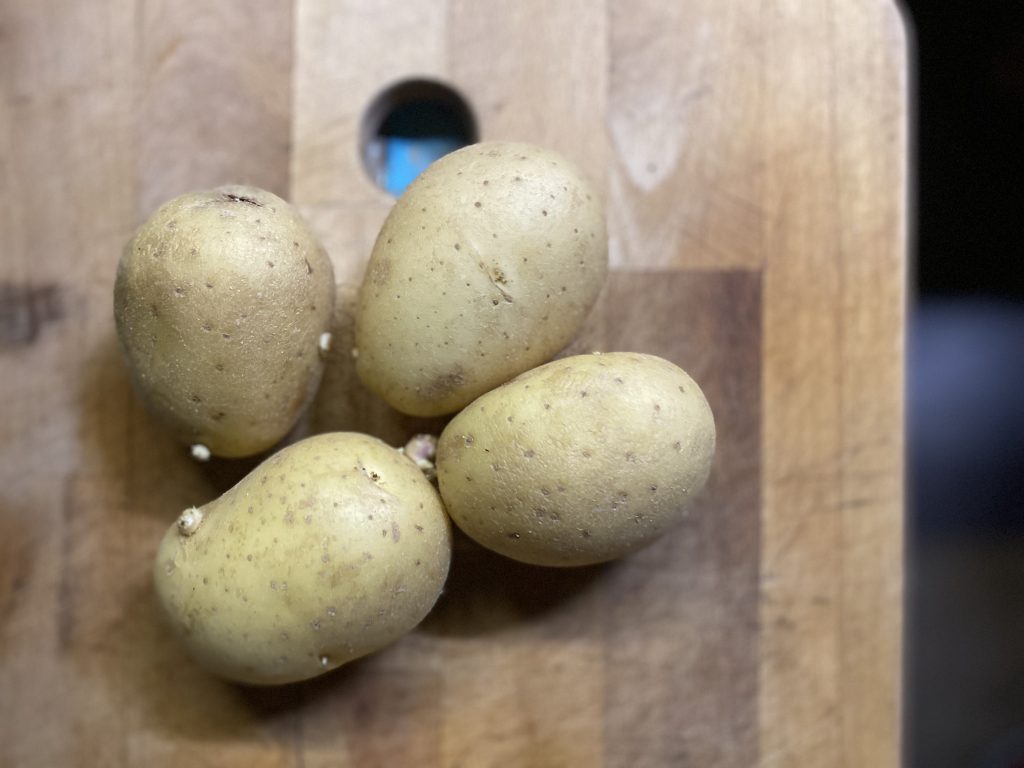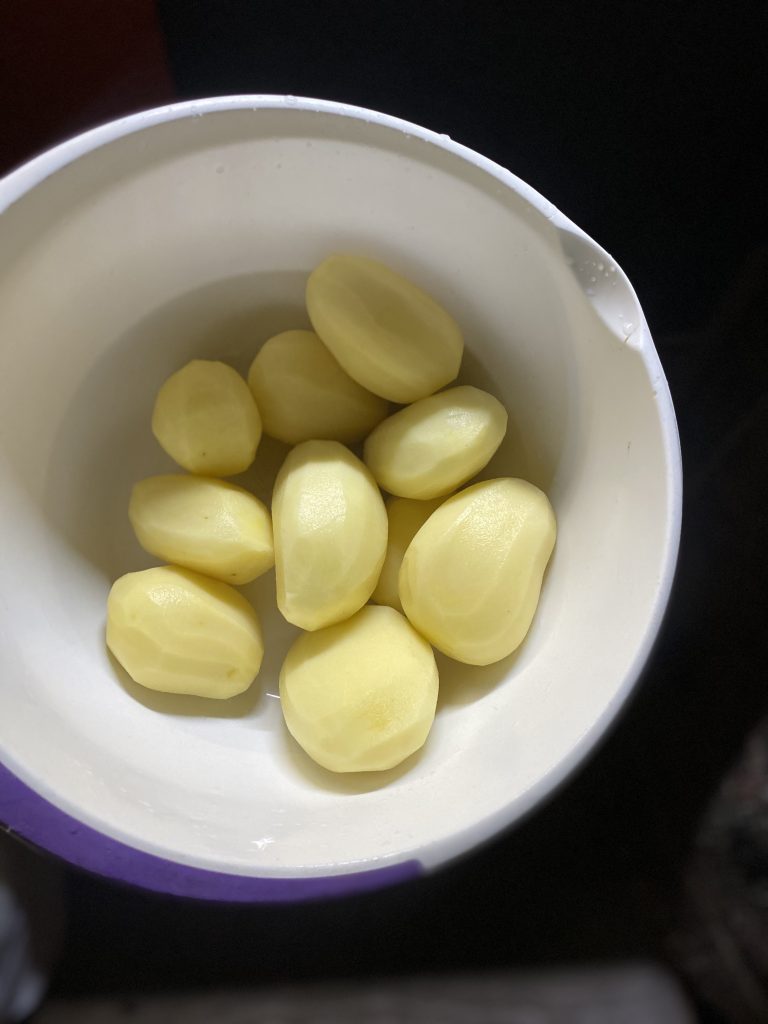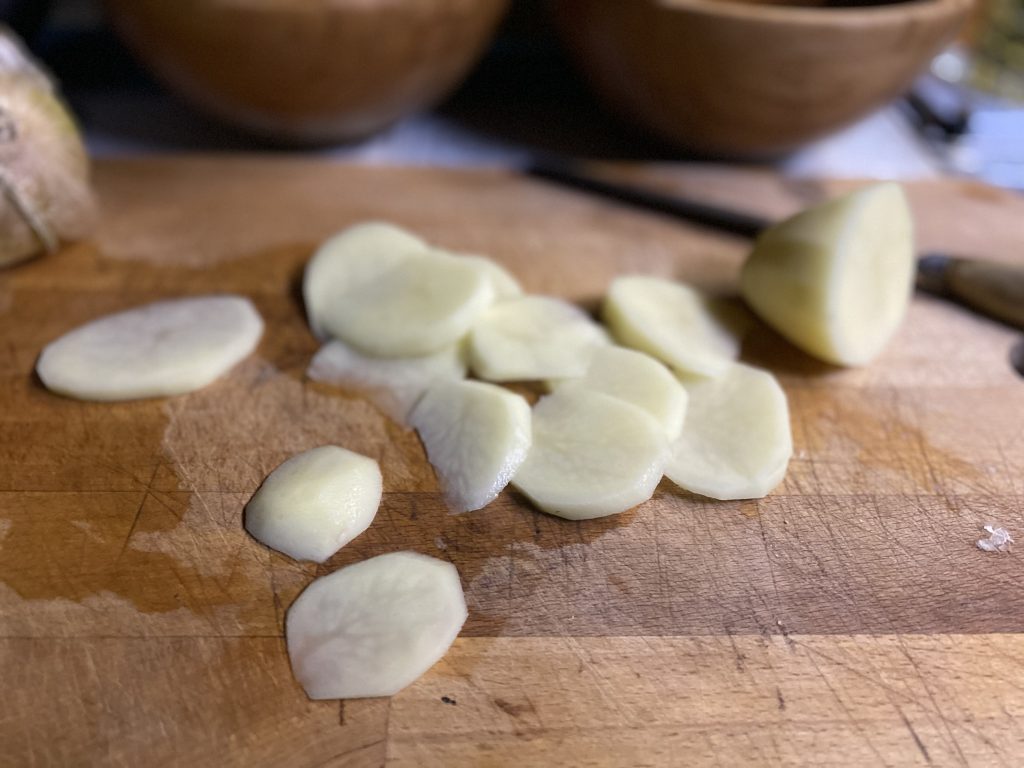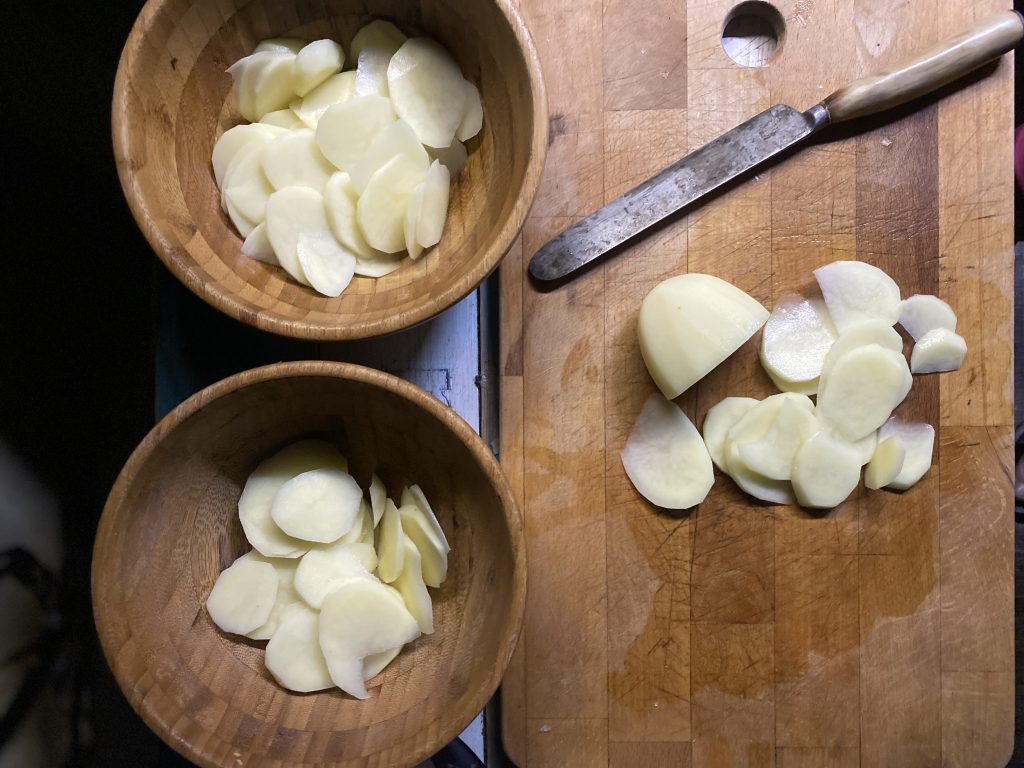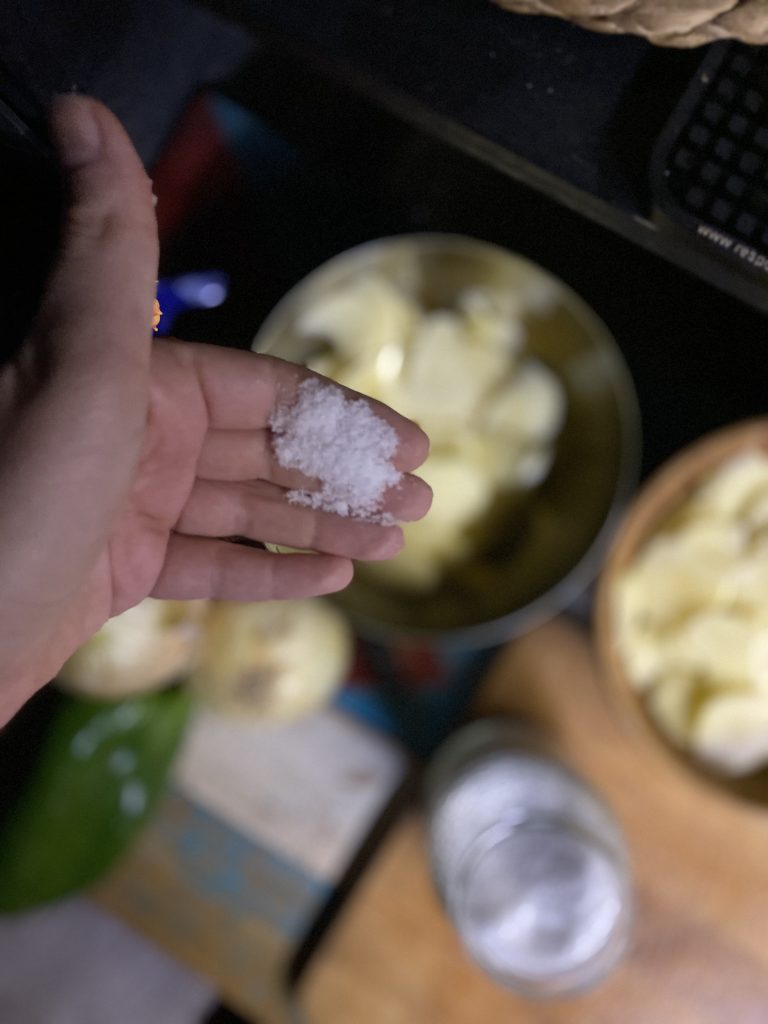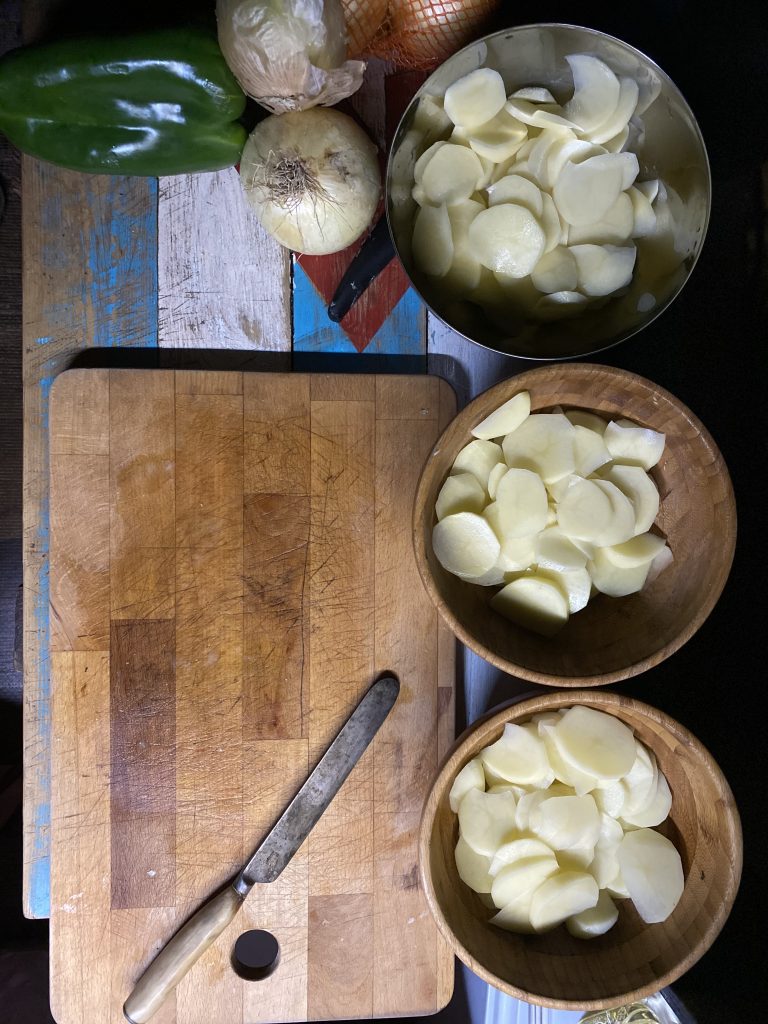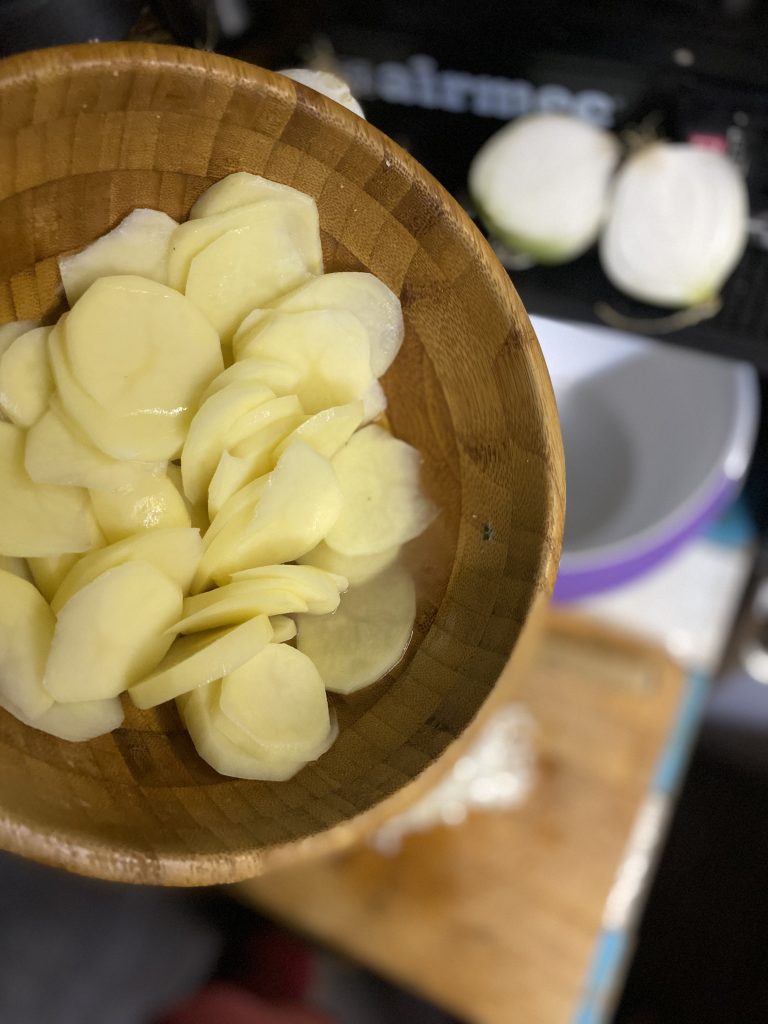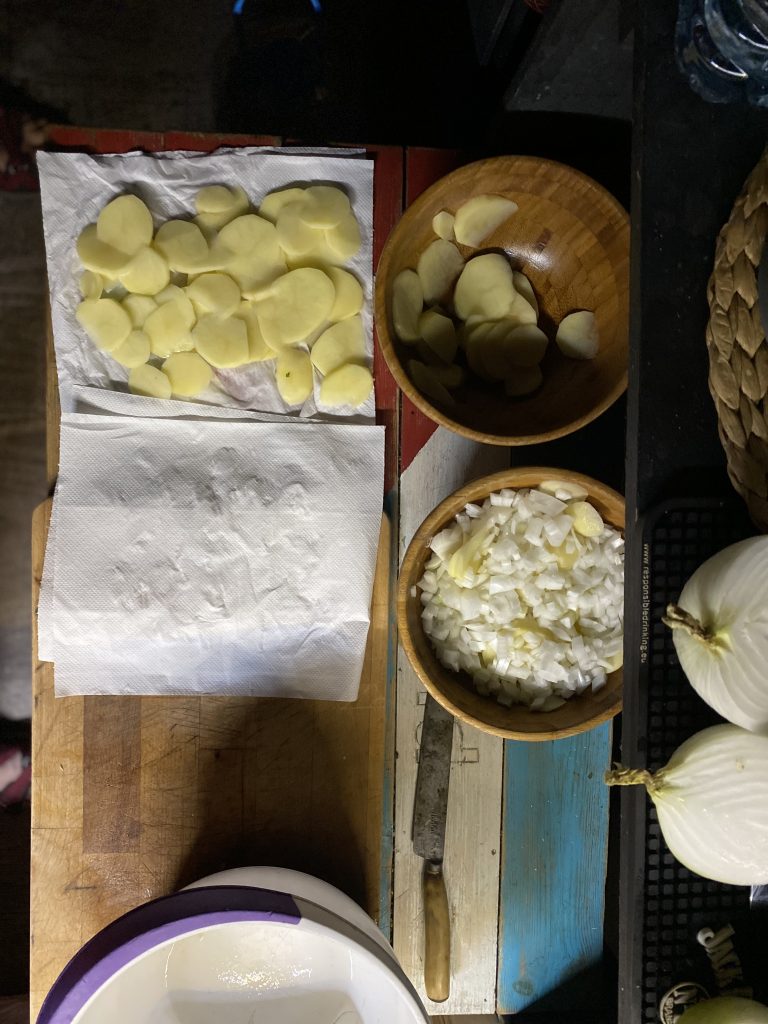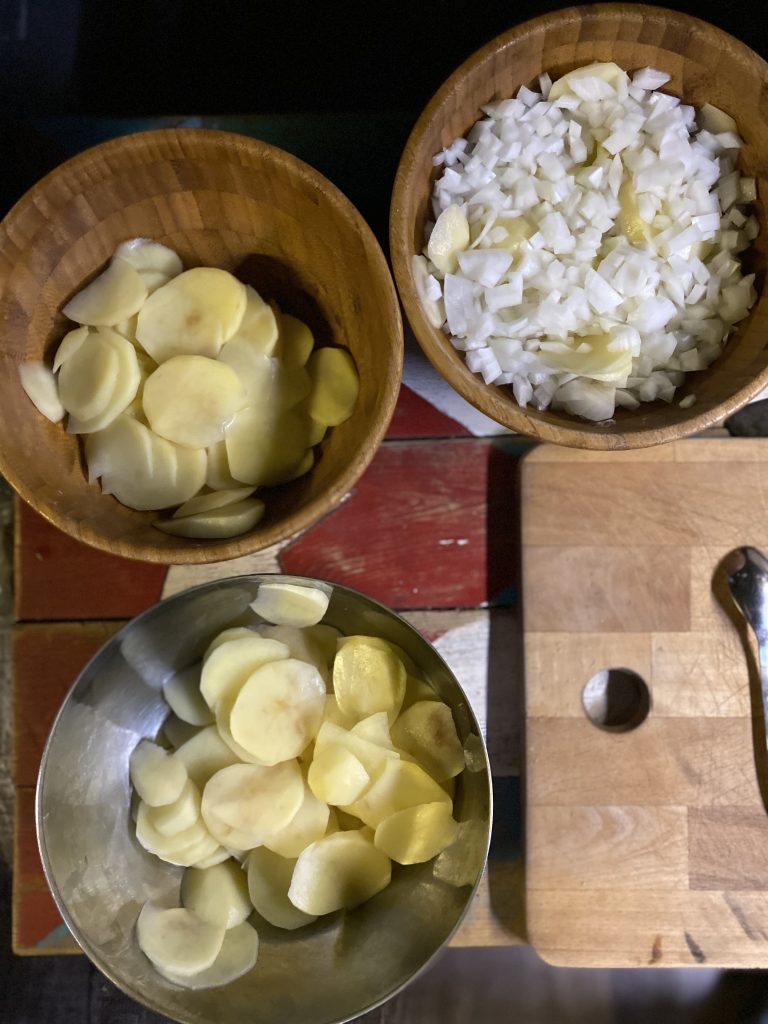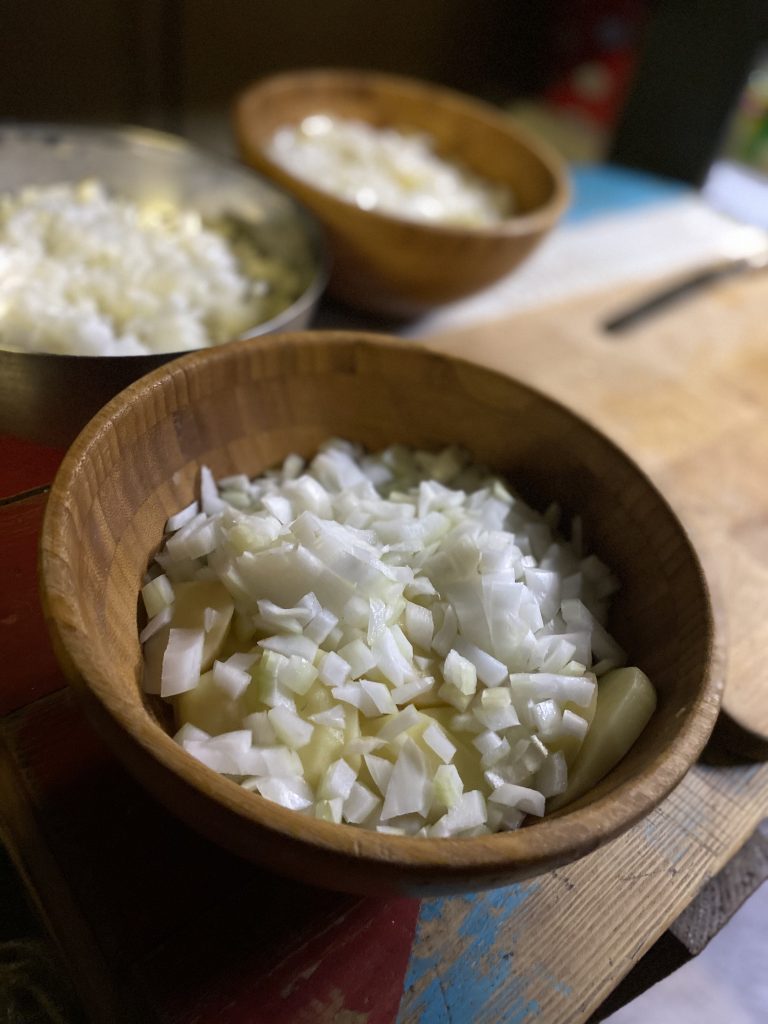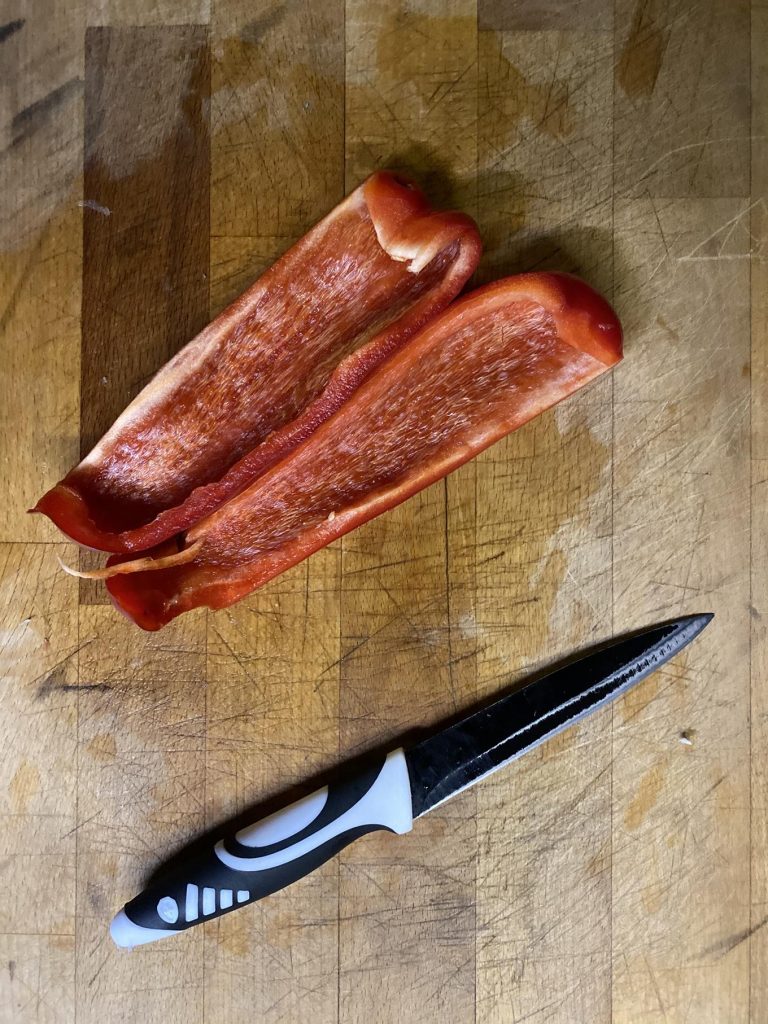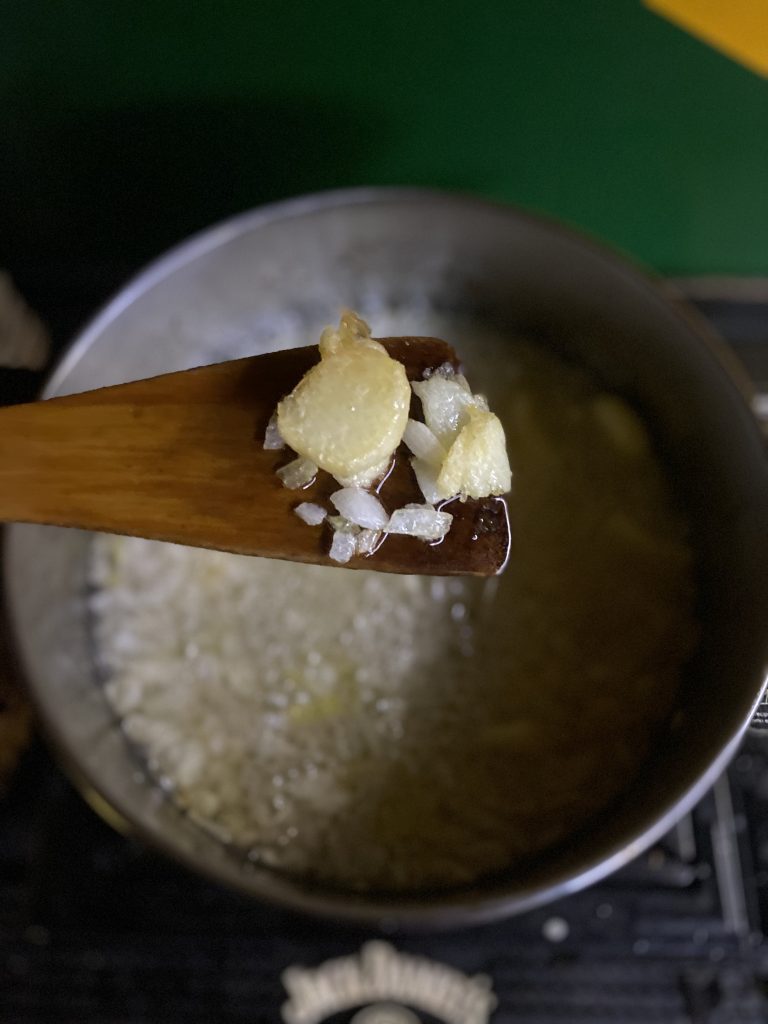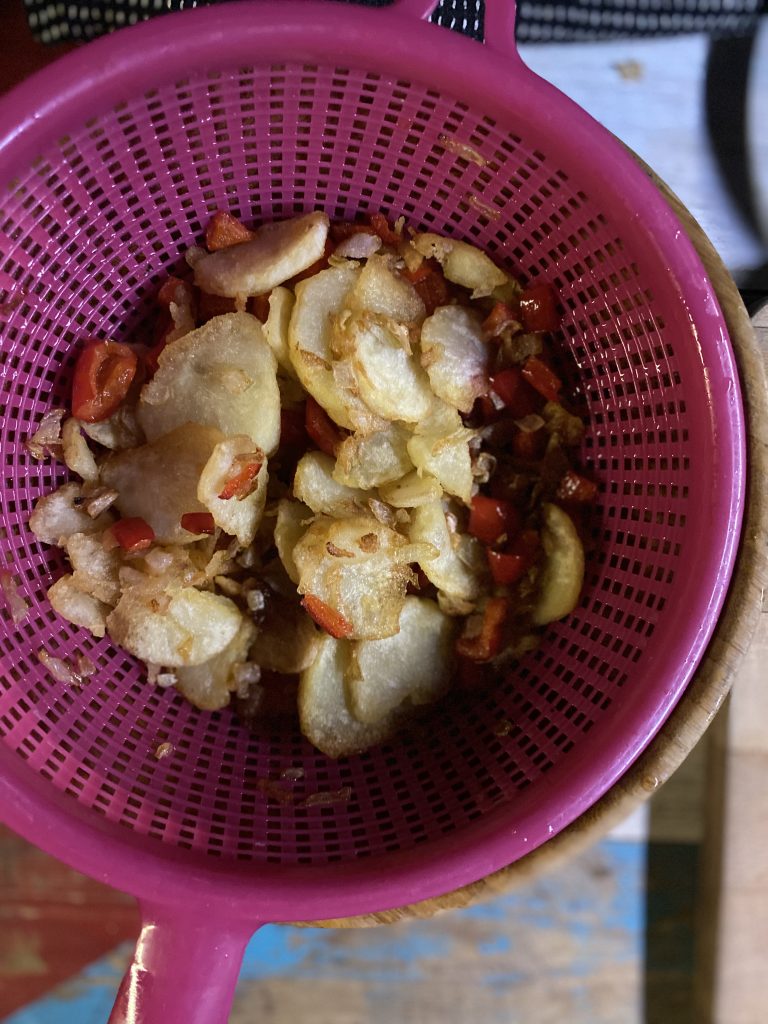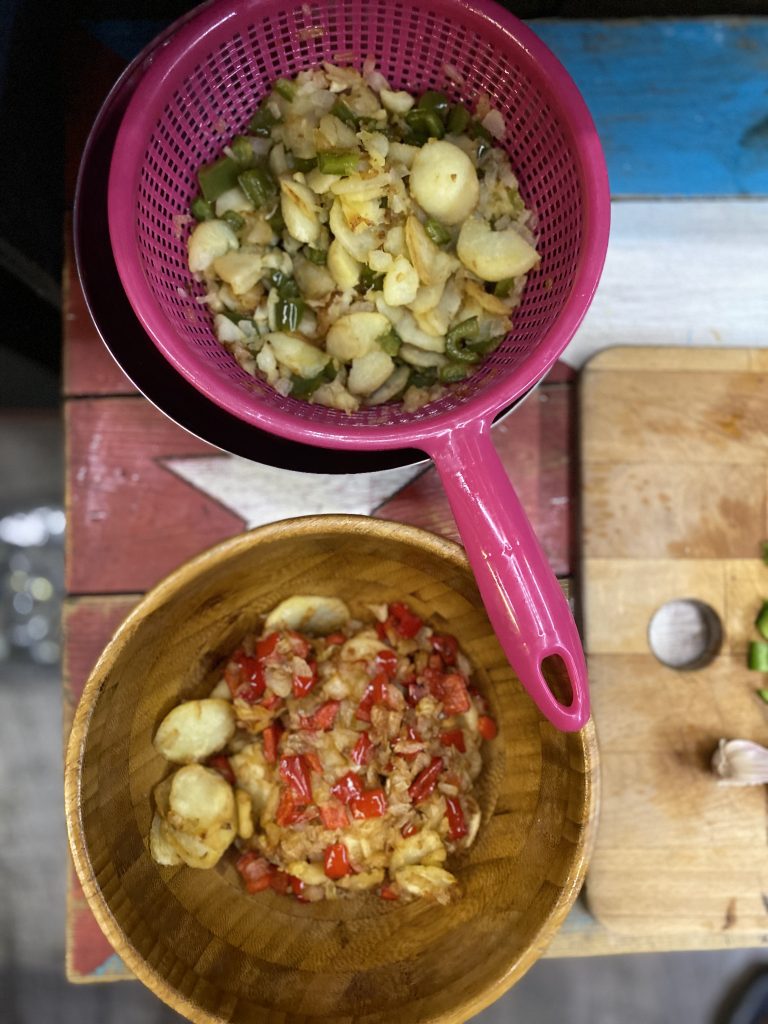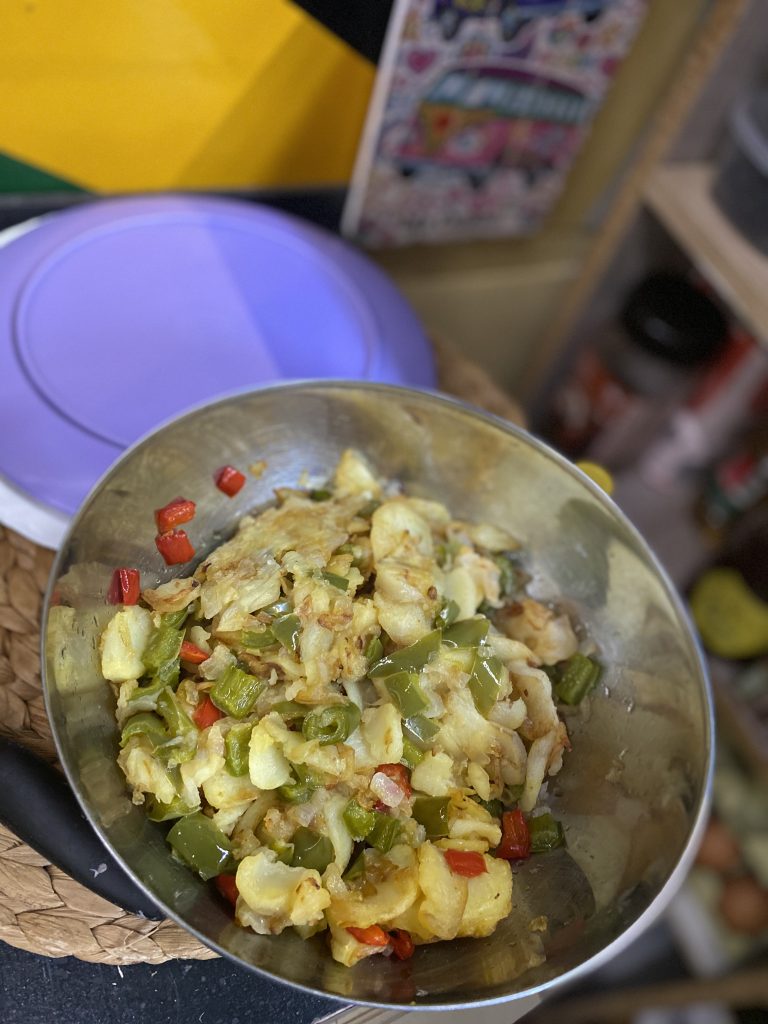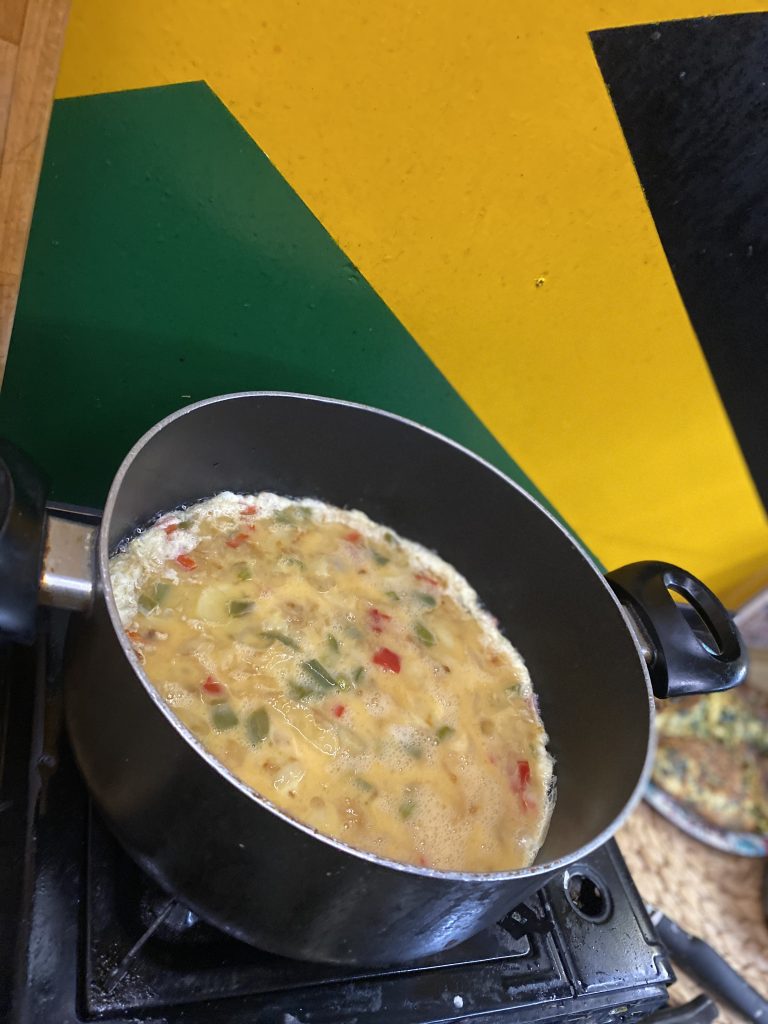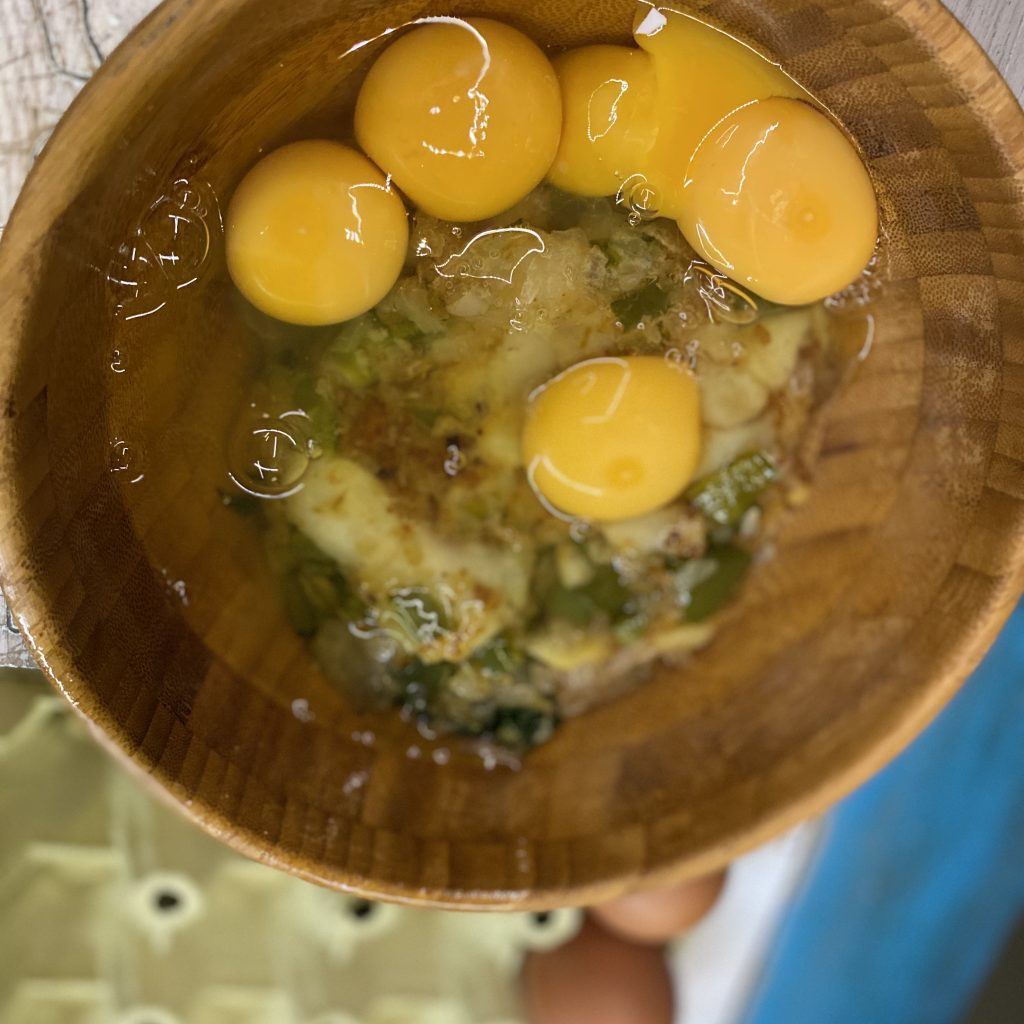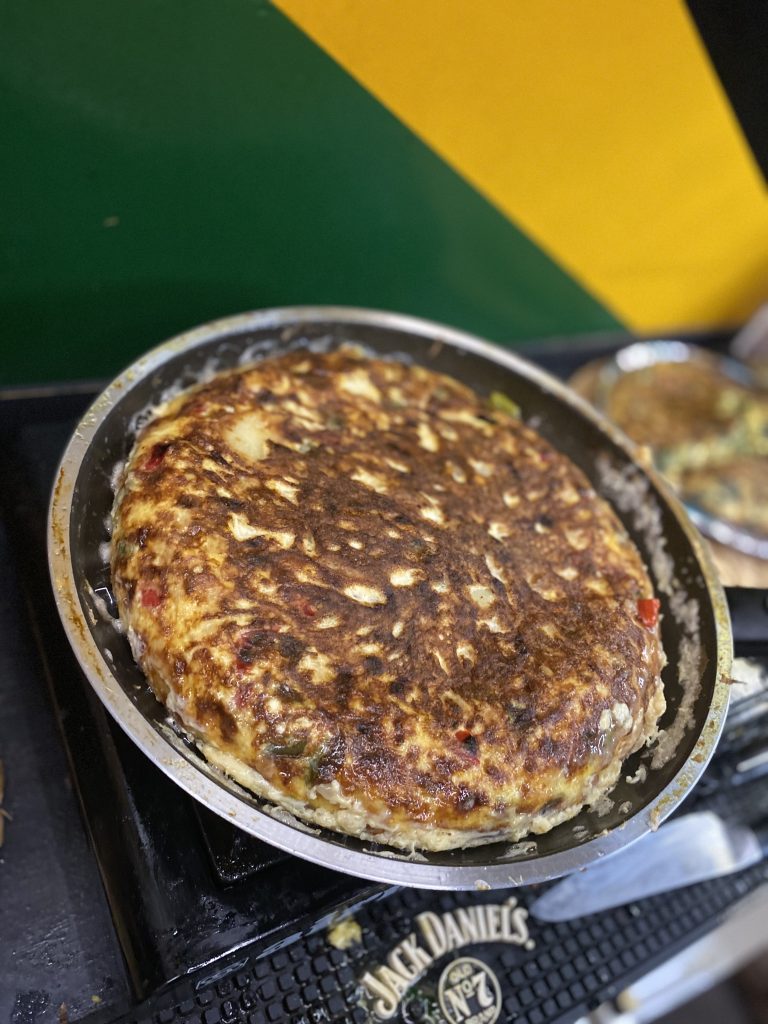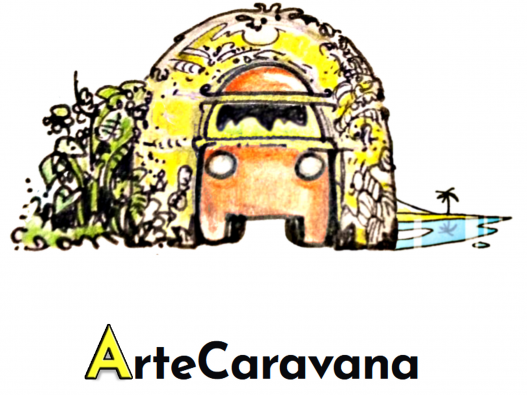
Leather handicraft straight from the workshop on four wheels
Wandering through Iberian lands
Tortilla de patatas con gazpacho! – Spanish omelette with potatoes and cold tomato soup straight from Andalusia
13/05/2020 5:11 PM
Today we are going to tell you a bit about two delicious and the most popular Spanish dishes (apart from paella) - tortilla de patatas and gazpacho. Since you came here you probably know that this tortilla is an omelette with potatoes and onions, while a thin flatbread made of corn or wheat flour is the Mexican version that we will not talk about today. And about the gazpaho ... if you are a Spanish cuisine expert, after reading this article you may say "hey, it's not gazpacho but salmorejo!" Well, you might be right. Or not. Because some (like us and a lot of Spaniards) believe that these are two variants of the same dish. By definition, Salmorejo is denser and made only with tomatoes, a lot of bread, garlic, oil, salt and pepper (I have also seen a recipe where a hard-boiled egg was added). In addition to these ingredients, you can add water to gazpacho to make it thinner and different vegetables - onions, peppers, cucumbers. We've used the name gazpacho from the very beginning, although the ingredients we use fit to the definition of salmorejo - but that is what a grandmother from Sevilla taught us! Anyway, salmorejo is only popular in Andalusia, in the rest of Spain no one will care what the difference is between one and the other because all variations will be called gazpacho.
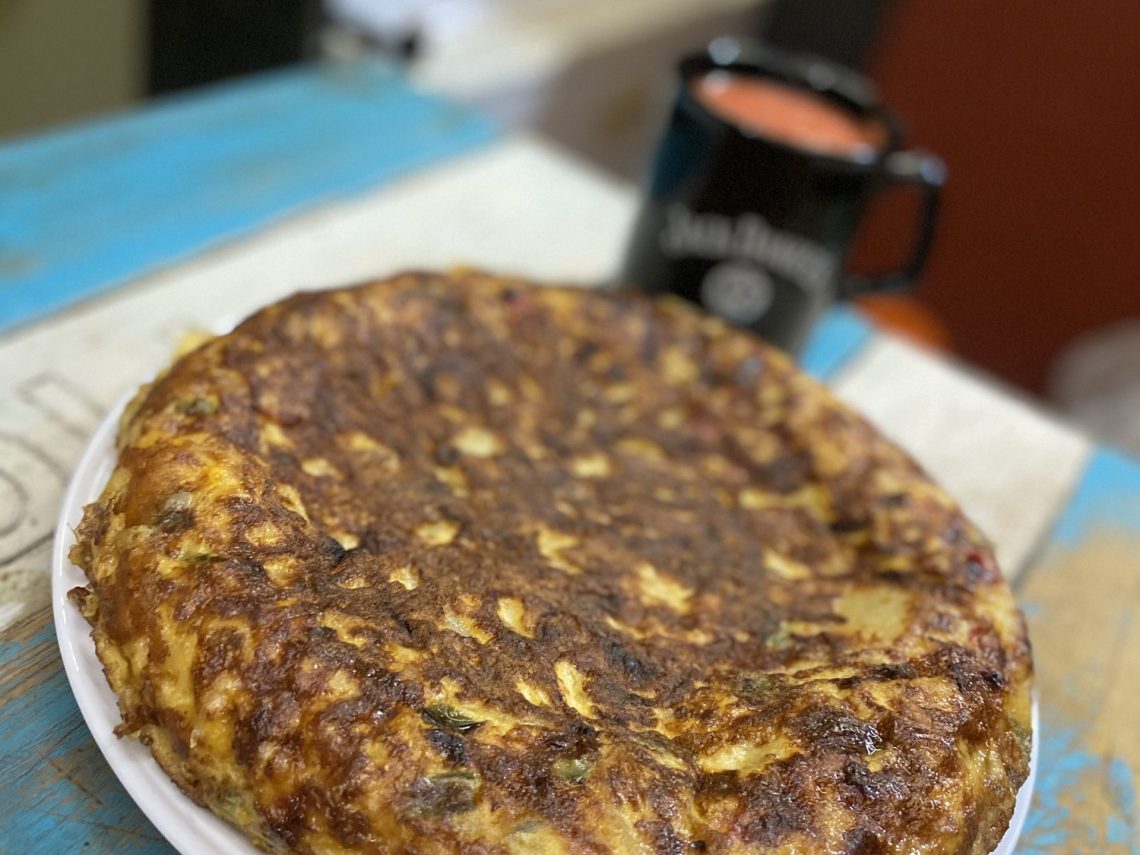
The beginnings were difficult, apparently I was able to prepare only scrambled eggs and I used to burn water when boiling it for tea. It took only a few years under the watchful eye of the master and now I cook life a real master chef and everyone tells us that we should open a restaurant. Of course, the last word always belongs to JJ, because his sense of taste can only be envied but I'm still doing quite well.
TORTILLA DE PATATAS CON GAZPACHO Á LA ARTECARAVANA
We got this recipe at the beginning of our journey from an over 70 years old lady from Sevilla, our friend's mom, who gave us a lot of important tips. Then, by trial and error, we modified the dish according to our tastes, obviously following the advice of other Spaniards, which we've met on our way so far. The final version looks like this - we start the preparation from gazpacho.
GAZPACHO (ANDALUZ) – for about 1l
- about 1kg tomatoes
- 0.5 red pepper
- 3-4 cloves of garlic - we love garlic, I suggest to start with less and add later, because our gazpacho is very spicy
- leftover bread
- olive oil
- salt and pepper
WHAT TOMATOES?
The best tomatoes for gazpacho are plum tomatoes – Spanish: tomato de pera - small and oblong, unfortunately quite expensive. Because of the price, I usually mix them with other varieties, for example to add some sweetness you can use some cherry or canary tomatoes - a special type of small tomatoes, that look like the cherry ones and grow on Canary Islands (they don't need too much water and they grow also in hard soil). Start by peeling the tomatoes and removing unnecessary elements ike seeds. You can also use food mill - thanks to it you do not need to peel neither tomatoes nor remove seeds from peppers – just mix them with an electric mixer and pour through food mill - the skins, seeds and other unwanted elements remain on the strainer.
After pouring it through the food mill put it into a bowl (I use a hand blender) and add garlic, spices, oil and bread. If you do not use food mill, simply put peeled and skinless tomatoes and seedless peppers with the other ingredients in the dish in which you will mix it.
Bread (does not have to be fresh, can be from the day before) must be soaked in water beforehand. When it gets soft, drain the water and then add the bread to the rest of ingridients. Mix everything together and taste it.
If you want gazpacho to be sweeter, add cherry tomatoes or more red peppers, if more sour, you can add wine or balsamic vinegar - preferably Spanish Jerez vinegar. If you want gazpacho to be thinner dilute it with water, and if you prefer denser - add more bread.
There are plenty of versions of this dish, some include green cucumber, others onions - the basic option suits us best, but we've started to add red pepper recently because it nicely emphasizes the color and adds some sweetness.
Pour the soup into bottles and cool in the fridge.
Now we're getting to the main part - TORTILLA DE PATATAS. For its preparation, we need potatoes, onions, eggs, peppers and a lot of oil.
TORTILLA DE PATATAS
- 5 eggs
- 0.5 kg potatoes - approx. 3-4 medium sized ones
- 1 large onion
- 0.5 large red or green pepper
- salt
- Oil
POTATO PREPARATION - THE SECRET OF A GOOD TORTILLA
Peel and cut the potatoes into slices, which are thicker on one side, thinner on the other so that after frying we get a „double” taste – a bit crispy and a bit cooked. We put some salt on them and put them aside for a while.
Dice the onion. Drain the water from the potatoes, which the salt has drawn out and then dry them with paper towels. Heat the of oil in a saucepan, the amount to cover the potatoes and onion (about half a liter). You should use extremely hot oil. If it's too cold, everything will cook instead of frying.
Cut the peppers into cubes and add them to the pot after about 10 minutes (in the second photo below you can see how potatoes and onions should be fried by then). Fry everything another 3-5 minutes and strain. The oil is reusable (I usually fry three tortillas at the same time in the same oil and sometimes pour it into a jar and use again later). After straining, put the mixture aside and let it cool down - you can't add the eggs until everything is cold, because it will immediately congeal.
Tortilla can be fried in two ways. When potatoes, onions and peppers are cool I add 4-5 eggs, mix and heat the oil on the pan. I pour the ready mixture onto the hot oil and fry for 2 minutes on each side, then the eggs are not completely congealed inside, but in my opinion, this tortilla tastes best because it is slightly moist. You can eat it hot or cold, but if you plan to leave it in the fridge for the next day, it is better to fry it longer so that the eggs congeal completely. I think that 5 minutes on each side is enough. When it starts to have this beautiful brownish colour – it's ready.
What pot do we use to fry tortilla?
We always used a teflon pot with a diameter of about 17 cm and it was perfect for the given proportions because the tortilla was neither too thin nor too wide. Unfortunately the pot… died. The new metal one, visible in the pictures (in which we fried all ingredients) is completely unsuitable because everything sticks to it. If you have a Teflon pot or saucepan with a diameter of about 17 cm, you can use it. We made a double tortilla this time and fried it in a much larger pot (25 cm in diameter) and it came out perfect. After frying on one side, we covered the pot with a frying pan, then turned so that the tortilla moved to that frying pan, and then we fried the other side on it.
You can also fry a tortilla in the pan itself but from these proportions it may come out a little too thin, more like an omelette than a dish that we are actually preparing.
And voila! Tortilla ready, serve it with a glass of cold gazpacho. Bon Appetit!
Tortilla ingredients are fried in deep oil, so this dish is not the healthiest one, so we haven't eaten it for a long time but it's really one of the most standard dishes in Spain. You can get it in almost every tapas bar, often it is served for breakfast in hostels and hotels, and in most supermarkets you can buy ready-to-eat ones - but only homemade is really tasty!
